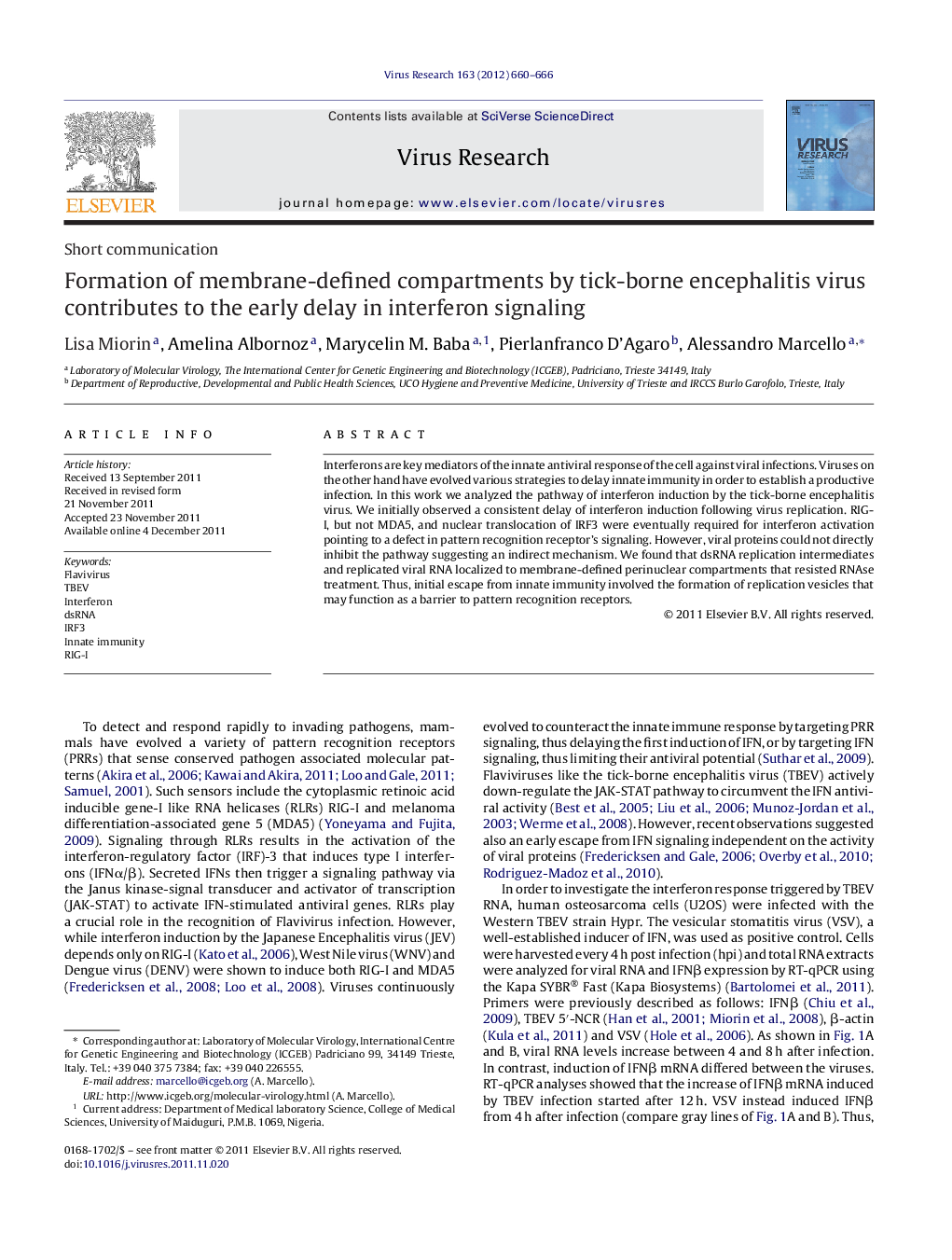| Article ID | Journal | Published Year | Pages | File Type |
|---|---|---|---|---|
| 3428915 | Virus Research | 2012 | 7 Pages |
Interferons are key mediators of the innate antiviral response of the cell against viral infections. Viruses on the other hand have evolved various strategies to delay innate immunity in order to establish a productive infection. In this work we analyzed the pathway of interferon induction by the tick-borne encephalitis virus. We initially observed a consistent delay of interferon induction following virus replication. RIG-I, but not MDA5, and nuclear translocation of IRF3 were eventually required for interferon activation pointing to a defect in pattern recognition receptor's signaling. However, viral proteins could not directly inhibit the pathway suggesting an indirect mechanism. We found that dsRNA replication intermediates and replicated viral RNA localized to membrane-defined perinuclear compartments that resisted RNAse treatment. Thus, initial escape from innate immunity involved the formation of replication vesicles that may function as a barrier to pattern recognition receptors.
